Quick dowels with a half-round router bit
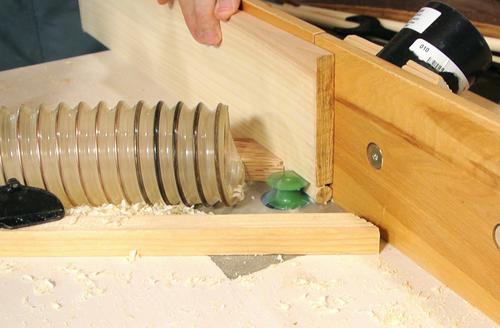 Even though I already had a pretty good method of making dowels using the
pencil sharpener method, I wanted to experiment with
making dowels with a half-round router bit.
Even though I already had a pretty good method of making dowels using the
pencil sharpener method, I wanted to experiment with
making dowels with a half-round router bit.
The idea was to route a half-round into the edge of a board from either side, leaving just a dowel in the middle.
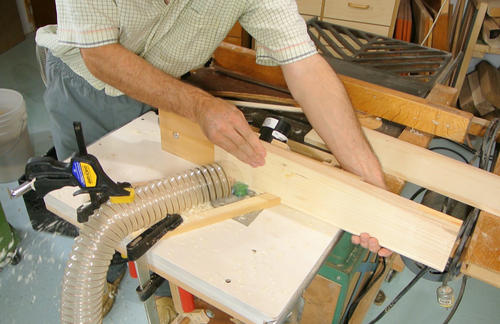 With the router bit opposite to the fence, the thickness of the stock would not
matter that much. I'd just have to push it across, flip it, push it across again,
and grab the dowel as it came out.
With the router bit opposite to the fence, the thickness of the stock would not
matter that much. I'd just have to push it across, flip it, push it across again,
and grab the dowel as it came out.
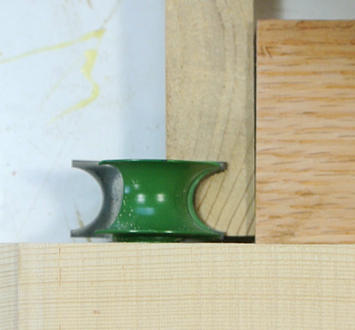
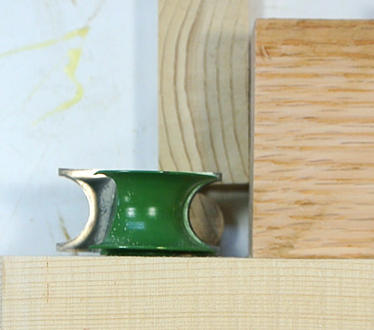 The elegant thing about this was supposed to be that the exact thickness of
the board I started with wouldn't even matter.
But that logic turned out to be flawed.
The elegant thing about this was supposed to be that the exact thickness of
the board I started with wouldn't even matter.
But that logic turned out to be flawed.
Imagine routing a board that is too thick (at left), then flipping it over and routing it again. This time, the not-routed part of the board would offset the stock so that the router cuts away too much of the remaining dowel.
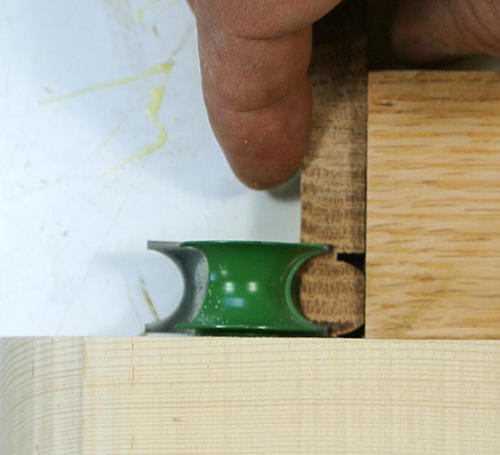 Similarly, a board that is slightly too thin would cause the two router cuts to be
too far apart, making a dowel with a flat spot on either side and too fat in the middle.
Similarly, a board that is slightly too thin would cause the two router cuts to be
too far apart, making a dowel with a flat spot on either side and too fat in the middle.
So this method does require that the board be exactly the same thickness as the size of the dowels. Not as elegant as I had hoped.
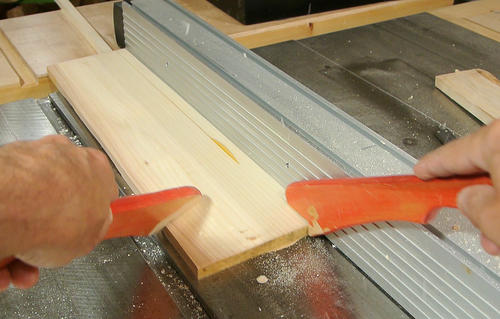 So I figured ripping square sections, just slightly larger than the dowels would be
a better way to go.
So I figured ripping square sections, just slightly larger than the dowels would be
a better way to go.
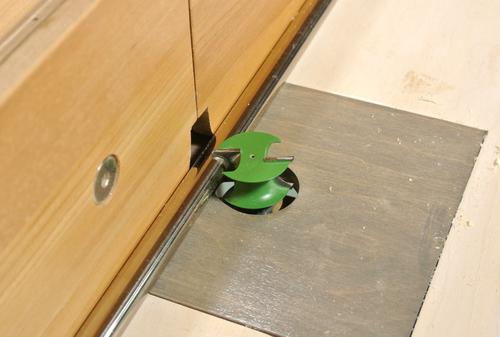 I set up the router fence using a 1/2" round steel rod to get the fence in exactly the right
position. The shank of a drill could also be used.
I set up the router fence using a 1/2" round steel rod to get the fence in exactly the right
position. The shank of a drill could also be used.
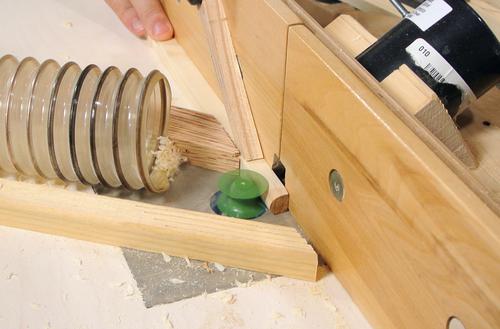 I used three featherboards to hold down the stick. The featherboard on the outfeed
keeps the dowel from getting pulled into the cutter
once it gets past the infeed featherboard.
I used three featherboards to hold down the stick. The featherboard on the outfeed
keeps the dowel from getting pulled into the cutter
once it gets past the infeed featherboard.
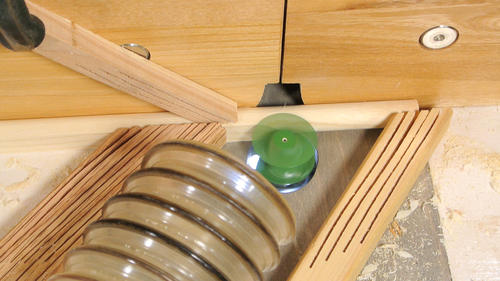
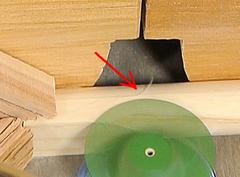 Depending on how the second pass is made (sometimes, the dowel ends up slightly rotated),
there may be a slight wisp, or a ridge on one spot on the dowel.
Depending on how the second pass is made (sometimes, the dowel ends up slightly rotated),
there may be a slight wisp, or a ridge on one spot on the dowel.
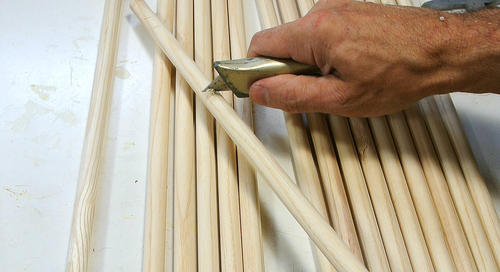 The ridge, if any, comes off easy enough with one stroke of a utility knife over the edge.
The ridge, if any, comes off easy enough with one stroke of a utility knife over the edge.
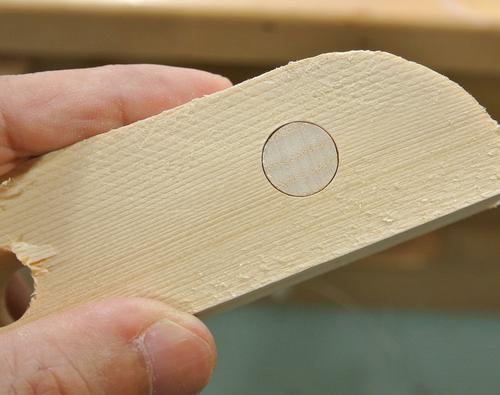 Taking measurements, my 1/2" (12.7 mm) dowels all came in the range of 0.490" to 0.500".
(0 - 0.25mm undersized) Close enough, certainly more accurate than most dowels from
most home centers.
Taking measurements, my 1/2" (12.7 mm) dowels all came in the range of 0.490" to 0.500".
(0 - 0.25mm undersized) Close enough, certainly more accurate than most dowels from
most home centers.
A downside of this method over the pencil sharpener method is that I can't tweak the size of the dowel. I'm stuck with whatever size half-round bit I have.
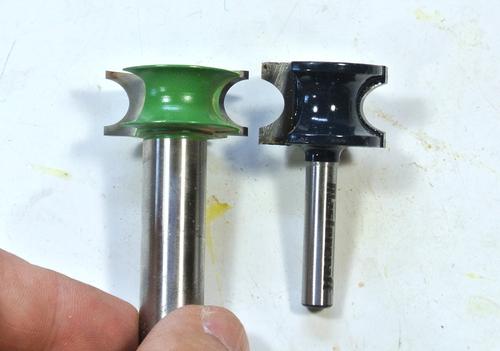 It does require a high quality router bit to begin with.
At left, a 3/8" half-round bit from Lee Valley tools, right, a Mastercraft 3/8" bit
from a 40-bit set I bought on sale at Canadian Tire. The Mastercraft bit's profile
is more of a parabola than a semicircle, so it's not suitable for making dowels.
It does require a high quality router bit to begin with.
At left, a 3/8" half-round bit from Lee Valley tools, right, a Mastercraft 3/8" bit
from a 40-bit set I bought on sale at Canadian Tire. The Mastercraft bit's profile
is more of a parabola than a semicircle, so it's not suitable for making dowels.
That said, the 40-bit set from Mastercraft cost less than the half-round bit from Lee Valley, so I can't really complain.
See also:
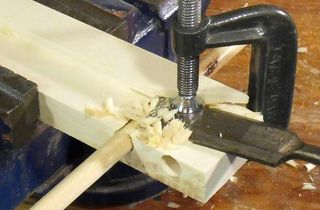 Pencil sharpener method
Pencil sharpener method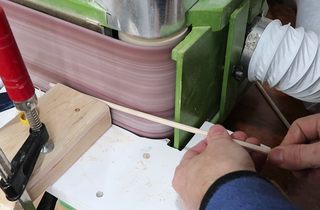 Making thin dowels, no jig required
Making thin dowels, no jig required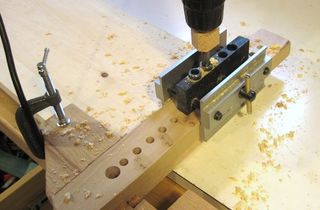 More about using dowels
More about using dowels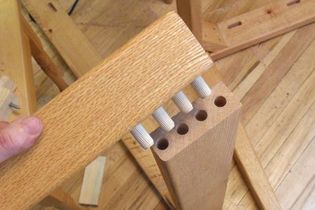 Joining table legs with
Joining table legs with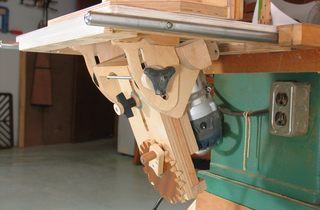 Homemade router lift
Homemade router lift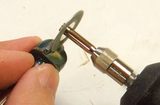 Sharpening router bits
Sharpening router bits